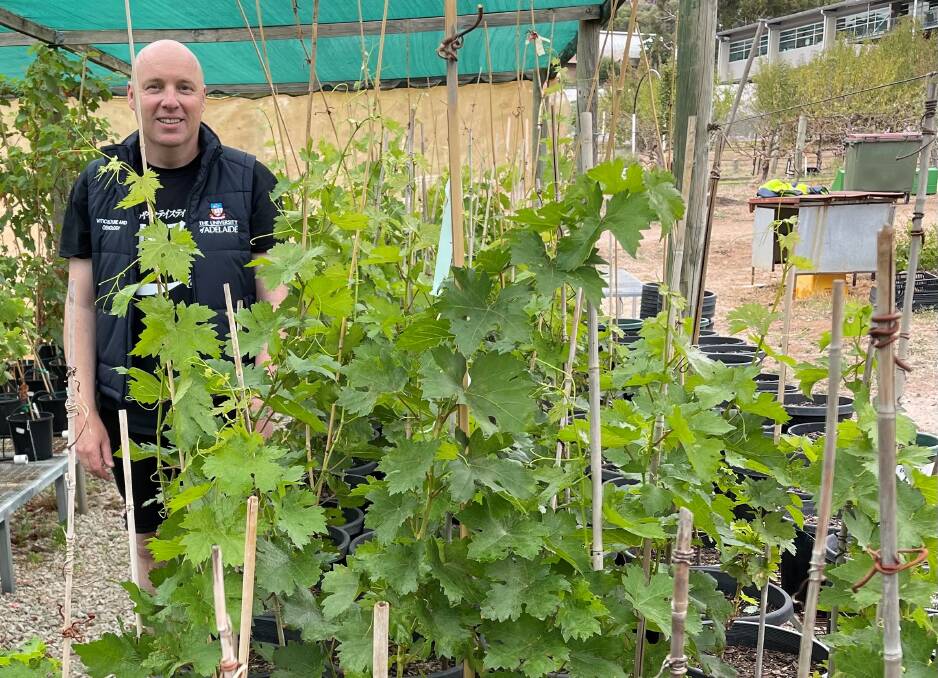
WINE drinkers who have mastered the pronounciation of Shiraz, Sauvignon Blanc and Tempranillo will have some new names to try out in the next few years.
A project at the University of Adelaide is exploring the potential of a number of vines from Cyprus - both for drought tolerance and taste.
PhD student Alexander Copper, from the University of Adelaide's School of Agriculture, Food and Wine, said there was a lot of interest from industry in looking at varieties that could handle less water and warmer climates.
But he said it was also important that these varieties would have an audience, which was why there were a number of tests performed to reassure both growers and potential consumers.
"Cyprus is somewhere that has been overlooked," he said.
"The climate in Cyprus aligns with what we've got in SA."
He said the mean mid-summer temperate was about 24 to 25 degrees Celsius, which was quite similar to many parts of SA.
Mr Copper said part of the reason for overlooking these varieties could be attributed to "a bit of snobbery in the past", with a similar situation occurring with Greek varieties.
But he said there was a lot of evidence, by exploring the sensory features and compounds of these Cyprus grapes, that they could produce a quality product, while using less water.
At the moment, the University of Adelaide is focusing on two red Cyprus varieties - the Maratheftiko and Giannoudhi - and his personal favourite, the white Xynisteri.
They have been looking at the role of polyfunctional thiols, which are aroma impact compounds generally known for their contribution to the 'tropical' aroma and flavour of Sauvignon Blanc and, more recently, in Chardonnay.
The study investigated five such thiols in Cypriot wines in these three Cyrpus varieties, comparing them to Australian Pinot Gris, Chardonnay and Shiraz wines.
Researchers found white wine contained compounds responsible for 'grapefruit', 'tropical fruit' and 'passionfruit' aromas at well above their sensory threshold, while compounds associated with 'struck flint' and 'meaty' characters were much lower in concentration.
A compound responsible for aromas likened to 'roasted coffee' was only detected in the Chardonnay and four of the Xynisteri wines.
A final thiol, with aroma attributes of 'blackcurrant' and 'boxwood' was only detected in Pinot Gris and three Xynisteri wines.
Overall, researchers found the concentration of flavour compounds in the Cypriot wines was comparable to those in popular Australian wines, such as Chardonnay and Sauvignon Blanc.
This scientific background was also backed up by some more hands on experience, with a panel of wine experts conducting a sensory study.
"The panel of wine experts in the sensory study identified flavours upon tasting Xynisteri wines that were comparable to Pinot Gris, which aligns with what we found when analysing the compounds present in both Pinot Gris and several varieties of Xynisteri," said Mr Copper.
"In consumer trials, consumers 'liked' the flavour of the Cypriot varieties, and in one segment of consumers, Xynisteri was preferred to Pinot Gris."
Mr Copper said much of these studies had been performed on the varieties in Cyprus but would also be replicated on the Australian-grown fruit as well.
He said there was a lot of potential with these varieties, particularly the Xynisteri.
He said in Cyprus it would ripen in late October, which was the equivalent to late April in SA, and would be harvested after all the reds were finished in a typical vineyard.
"It can produce up to 20 tonnes a hectare with no irrigation and still produce a quality product," he said
Mr Copper said they had only been able to import small quantities of each variety so were working to build up numbers, with a small trial planting to go in at Paulmarra Wines in the Barossa later this year.
He estimated some of these varieties could be growing on a commercial scale within the next four to five years and would be particularly suited to warmer, inland winegrowing regions, such as the Riverland or Barossa.
Mr Copper said there had been a shift in consumer expectations in the past decade, with a number of new varieties embraced, but there were also still plenty of varieties to consider.
"There are some Georgian varieties out there," he said.
"As a winemaker, we're also looking for something new to play with."
Start the day with all the big news in agriculture. Sign up here to receive our daily Stock Journal newsletter.


